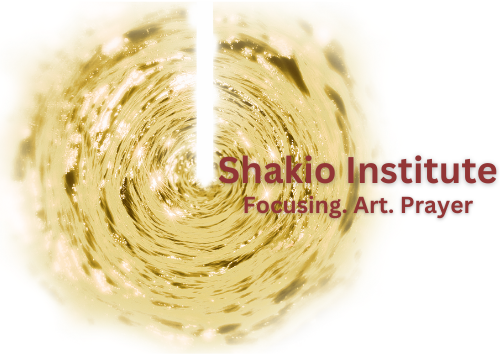Focusing as a therapeutic tool to Focusing as a new human possibility
“There is an ancient tradition according to which, if we were directly in contact with God, we would burn up. If you think of the body as insulation, then it makes sense that the cosmos comes to us through our bodies. It might otherwise be puzzling, given the history of mechanical concepts of the body, why we need to pay attention through the body. We must indeed attend through the body to think about a situation or any topic further than the obvious. We need to attend further than the obvious in order to develop as people—and I would argue that we need to develop as people. It is not enough that there is an infinite cosmos. We need to develop ourselves, however discouraging we may sometimes seem to ourselves.
Your own inner phenomenological sense of your own body is not only your sense of your muscles, your legs, the back of your head. It’s not only a sensing of things like the floor, the chair, or whatever you see or touch. The bodily sense is also your sense of your situations, your life. For example, I am now part of your situation. You have been permitting my words to have an effect on how your body feels to you right now.
Our bodies carry our situations. We carry our life with us. Our bodies can total up years of all kinds of experience and at any moment give us something new, a new more intricate step.” (Eugen Gendlin) Gendlin can be understood on many levels. Usually, the initial recognition comes through the steps of the practice—typically, a person learns Focusing and feels its beneficial effect on their life. For some, the practice allows them to experience movements or sensations they’ve never encountered before, and they respond with awe and gratitude that such processes are even possible.
Others, who have already touched something of these depths in their lives, stand in awe and gratitude that they are finally encountering a language and steps that offer them tools for working with what they’ve always sensed but didn’t know how to engage with. These individuals, who often carry sensitivities that have matured over many years, now find a sense of order—and even a way to work with those deeper layers with wisdom and awareness.
This initial meeting with Gendlin’s world and with the practice is a precious and valuable stage.
But beyond this stage, people often find themselves at a crossroads. Some continue practicing Focusing, but because they haven’t deepened into the wisdom behind it, their practice suffers from the same limitations that affect any inner practice lacking depth. Often unconsciously, it becomes shaped by the very patterns and worldview they already inhabit. It turns into yet another “life-enhancing” tool—one that, though it emerged from great wisdom and depth, becomes diluted and repurposed to serve pre-existing needs, rather than generating true transformation.
In this way, the practice ends up serving the very world the person has already built—a world often shaped by societal templates they may not even be aware of, because they haven’t imagined that life could be lived any other way. That is: one might know there are other kinds of templates, but not even consider that it’s possible to live without adopting external patterns—that new ways of being can emerge through a delicate, precise first-person process.
Some people appear to “expand” Focusing by applying it in other fields. And because it is a powerful and meaningful tool, it becomes another item in their toolkit. For example, therapists may use it as another body-mind modality in their therapeutic work, or consultants may use it as an additional method in their professional practice.
At first glance, these people seem to be expanding Focusing. But without realizing it—because they are not familiar with the deeper philosophy Gendlin developed—they are actually narrowing it. The radical and revolutionary potential of the practice is diminished.
This narrowing is also partly due to the way people (understandably) read Gendlin’s small book *Focusing*, written at a relatively early stage in his philosophical development, before he had fully explicated his broader, groundbreaking understanding of life and process.
The book seems to offer a method for dealing with lack of clarity, for working through confusion, or feeling stuck—in other words, situations that are interpreted through the lens of discomfort as a “problem.” In it, Gendlin outlines six steps that involve directing attention to the felt sense in the body and following that sense of meaning until something shifts and a new understanding of the situation emerges.
This felt sense is like a bodily aura or awareness of the situation that knows something wider and more precise. Through process steps—including clearing a space, making contact with the felt sense, giving it a new name or “handle,” and working it back and forth between body and language—a shift can occur, and a new understanding of reality emerges.
We wish to share with you a broader understanding of Focusing and of Gendlin’s larger project—an understanding that only becomes possible through deep engagement with Gendlin’s books and articles, in which an entirely different grasp of the Focusing process is revealed. These writings—especially *A Process Model* (APM) and the remarkable dialogues Gendlin held with his friend Dave Young in his final years—allow for a more expansive and transformative comprehension of Gendlin’s work.


